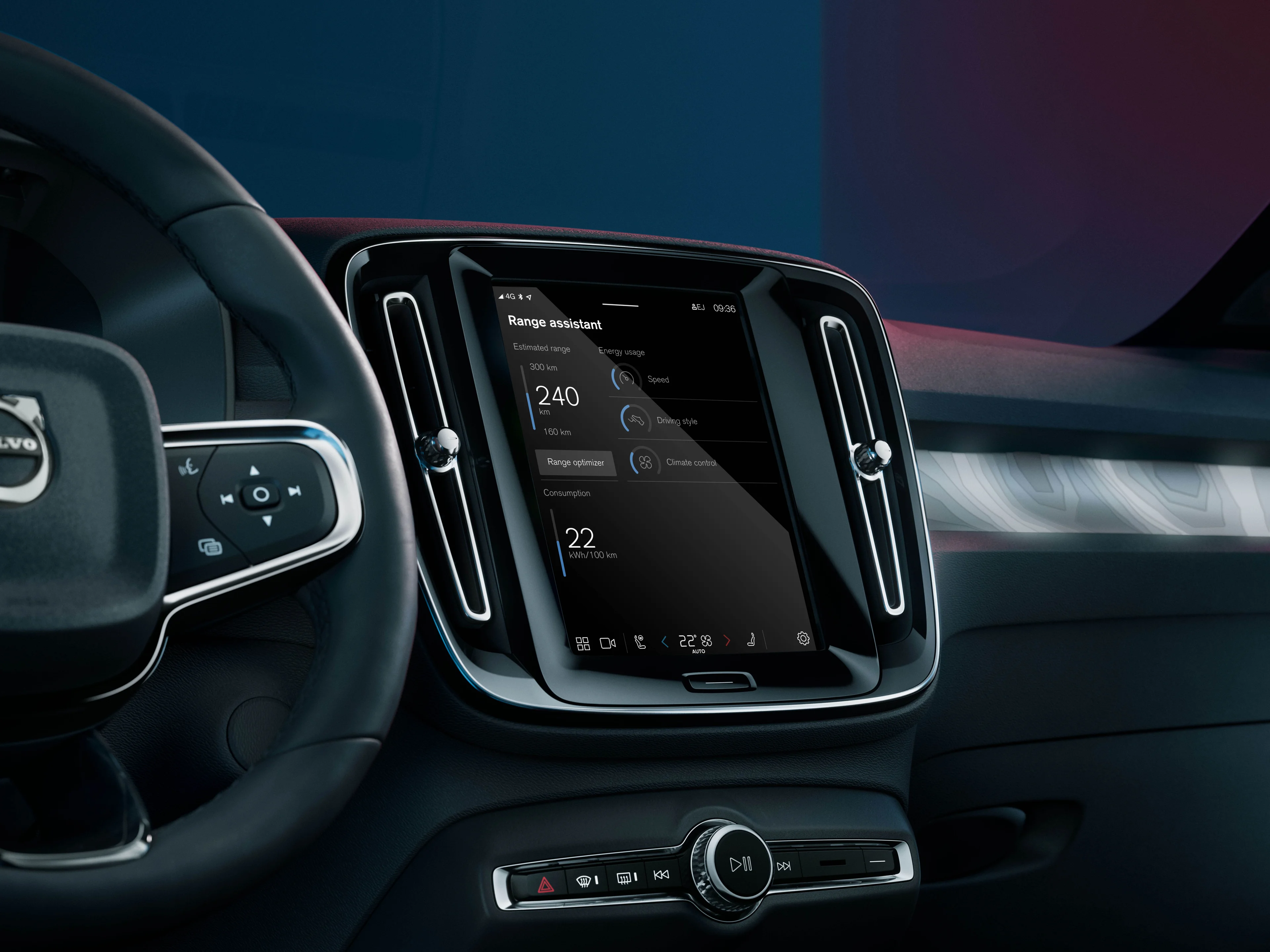In-house software: new Range Assistant app for electric cars
We’re soon rolling out a new over-the-air software update for our fully electric Volvos. The software package also contains a new, in-house developed in-car app: the Range Assistant.

Range Assistant can help change driver behaviour, to improve range. (Note: user interface may vary in a later version.)
It's a simple three-letter abbreviation, but thanks to OTA – over-the-air – we've entered a brave new world in product development. For a long time, we could only update our cars at set times. Often we'd do it only twice a year: once in the spring and once in the fall. But thanks to connectivity and OTA, we can now continuously improve and update our cars.
Our next OTA update includes a new feature: the Range Assistant in-car app. It will come as a beta version in the latest OTA update and improvements will be made continuously.
The Range Assistant is designed for pure electric cars and helps drivers in two ways: it gives them insight into what factors affect the range and to what extent; and it gives feedback that can help optimise the range of their Volvo.
The Range Assistant was developed in-house, by a cross-functional team of UX designers, energy efficiency buffs from our Safe Vehicle Automation (SVA) team, infotainment software developers and climate experts. Because driving an electric car efficiently requires a different approach than a combustion engine car, the Range Assistant aims to help make that transition easier. That was an important starting point when designing the app.
"In an electric car, speed makes a huge impact on how much range you have," says Anna Arasa Gaspar, a UX manager in our Design department. "So we saw the need for an app that could give you info on what your range is right now, how much it can vary, and how much you can achieve by changing behaviour. We deliberately chose to include only those things that mostly affect range and that the user can affect. The weather is also a big factor and cold affects the battery – people can't change the weather, but the climate system can be adjusted."
For example, with the Range Assistant app drivers can choose to turn down the climate system through the range optimiser feature. Using less energy this way is a big factor in optimising range. The app also indicates to what extent the current speed and the driver's use of the throttle affects the range. Drivers can then tweak their throttle control and adjust their speed, and see the effect this has on the range.
“We develop features and apps much faster by doing things in-house.”
Another exciting feature of the Range Assistant is that it was designed in-house. It's a great example of our ambition to develop 50 per cent of all software in our cars within our own quarters. That's a big difference compared to how things used to be, says Fredrik Hulth, product manager for our infotainment system within Connected Experience:
"It's a big shift. Looking at the previous system, we had a Tier 1 supplier doing all the work for us. We were only specifying things and purchasing things. Our people were largely function owners, system responsibles and testers. Now we are mainly software developers. Every six or eight weeks we have a new update, and we're pushing those out to all cars we have produced. So existing customers can also benefit from those updates."
We develop features and apps much faster by doing things in-house instead of via suppliers. The Range Assistant took approximately six months to create, from idea to deployment.
"It's very exciting to be able to influence, iterate and see immediate results," Fredrik says.
Testing and trying is the new name of the game, says Fredrik: "One of our mottos is 'fail fast.' We can now immediately try out an idea, and if it doesn't work, we change it. There's an overall plan of course, but if things don't turn out the way we want, we can quickly change the plan. We have a lot more possibilities and freedom. Plus we can deploy new features and get immediate responses from the people using it."
Anna is equally pleased with the move towards in-house software development and OTA updates. "It gives us the opportunity to evolve things and get feedback from users directly," she says, adding that it also helps meet some of the challenges around the initial roll-out of our Android-powered infotainment system.
"We had this goal of where we wanted the car to be, but the Android project started from scratch and it was a bit tight when we delivered it the first time. The OTA updates enabled us to quickly provide new features that we were not able to deliver at the time of launch."
Fredrik sees another upside to the new way of working. "For me, this is a much more fun workplace," he laughs. "To be able to continuously evolve our products, for new and existing customers, it's very exciting."
And he’s not the only one who thinks so, he adds. "We attracted a lot of new people in recent years. Before, developers were not that interested in working at Volvo. But now they are interested because they can really apply their skills here."